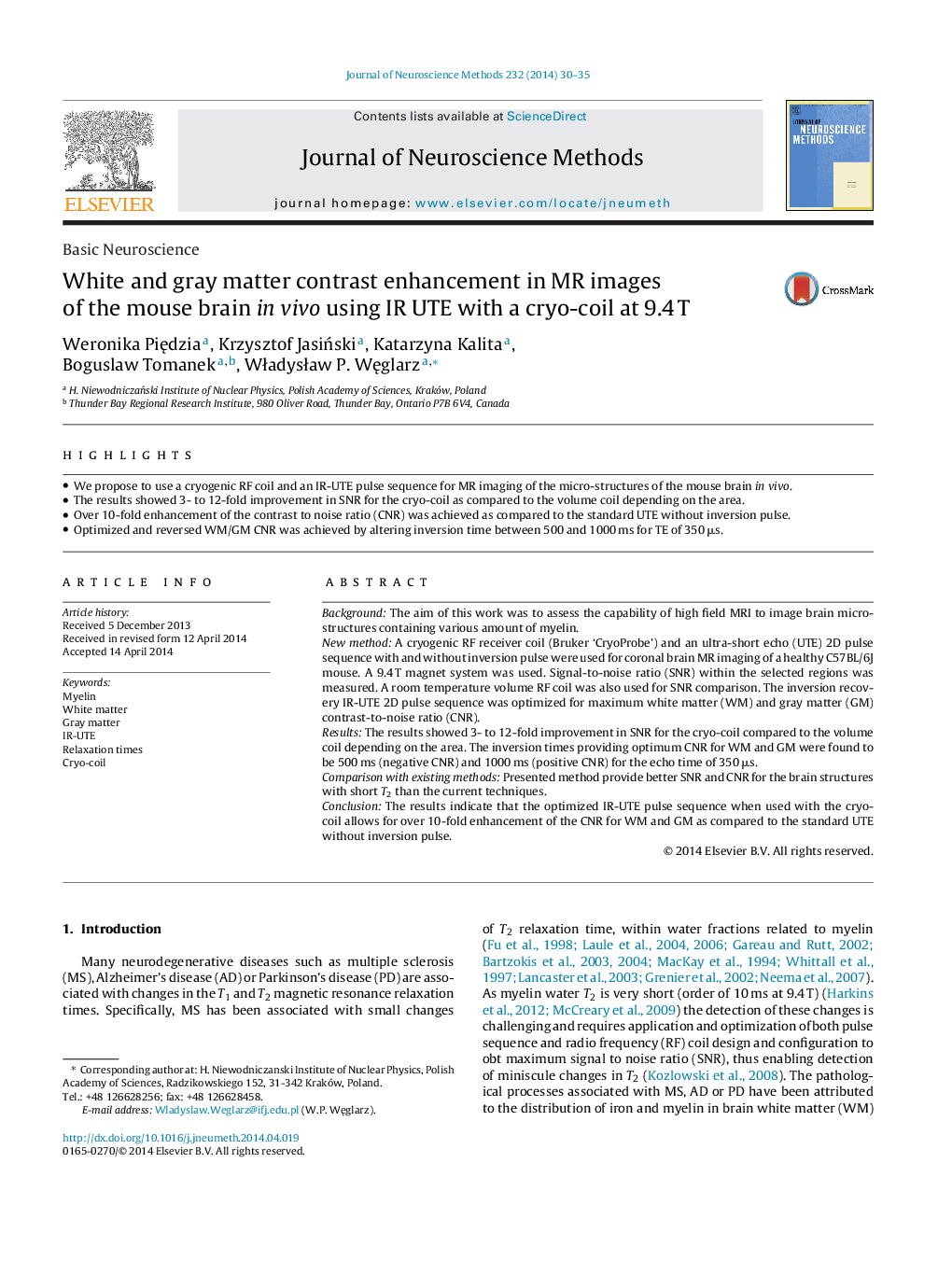| Article ID | Journal | Published Year | Pages | File Type |
|---|---|---|---|---|
| 6268669 | Journal of Neuroscience Methods | 2014 | 6 Pages |
â¢We propose to use a cryogenic RF coil and an IR-UTE pulse sequence for MR imaging of the micro-structures of the mouse brain in vivo.â¢The results showed 3- to 12-fold improvement in SNR for the cryo-coil as compared to the volume coil depending on the area.â¢Over 10-fold enhancement of the contrast to noise ratio (CNR) was achieved as compared to the standard UTE without inversion pulse.â¢Optimized and reversed WM/GM CNR was achieved by altering inversion time between 500 and 1000 ms for TE of 350 μs.
BackgroundThe aim of this work was to assess the capability of high field MRI to image brain micro-structures containing various amount of myelin.New methodA cryogenic RF receiver coil (Bruker 'CryoProbe') and an ultra-short echo (UTE) 2D pulse sequence with and without inversion pulse were used for coronal brain MR imaging of a healthy C57BL/6J mouse. A 9.4 T magnet system was used. Signal-to-noise ratio (SNR) within the selected regions was measured. A room temperature volume RF coil was also used for SNR comparison. The inversion recovery IR-UTE 2D pulse sequence was optimized for maximum white matter (WM) and gray matter (GM) contrast-to-noise ratio (CNR).ResultsThe results showed 3- to 12-fold improvement in SNR for the cryo-coil compared to the volume coil depending on the area. The inversion times providing optimum CNR for WM and GM were found to be 500 ms (negative CNR) and 1000 ms (positive CNR) for the echo time of 350 μs.Comparison with existing methodsPresented method provide better SNR and CNR for the brain structures with short T2 than the current techniques.ConclusionThe results indicate that the optimized IR-UTE pulse sequence when used with the cryo-coil allows for over 10-fold enhancement of the CNR for WM and GM as compared to the standard UTE without inversion pulse.
